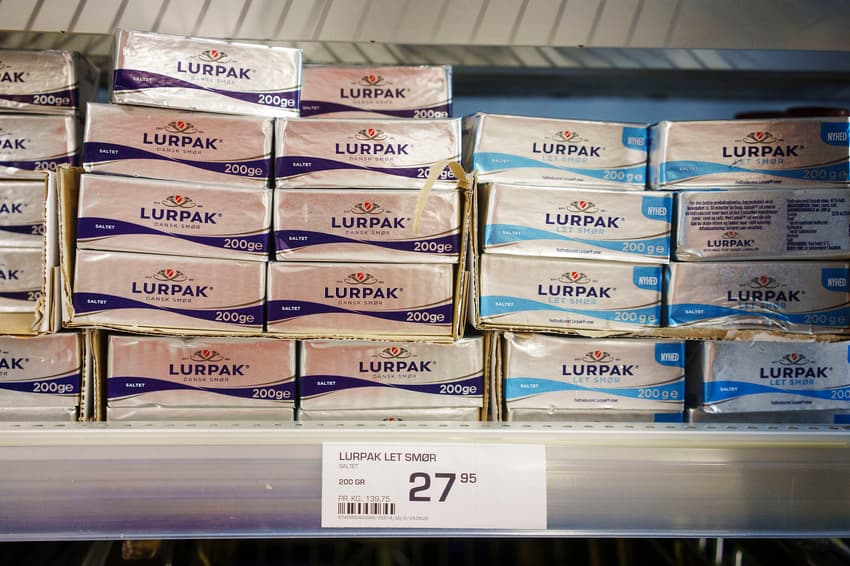Inflation in Denmark at new 40-year high

Prices of everyday goods in Denmark were 10 percent higher on average last month than in September 2021, with inflation now at its highest since 1982.
The latest update of Statistics Denmark’s consumer price index shows that inflation has further pushed up prices for people living in Denmark.
Prices in September 2022 compared to September 2021 represent the highest one-year inflation rate since 1982 when it was 10.1 percent, according to the agency.
The inflation figure represents an average or general increase in prices. Prices changes for individual items or product categories can be higher or lower than the overall figure.
The Danish Chamber of Commerce on Monday estimated that current inflation rates could cost an “average” Danish family of two adults and two children between 40,000 and 45,000 kroner.
“I did not expect us to see two-digit inflation rates. I thought that belonged to the history books,” the interest organisation’s senior economist Tore Stramer told news wire Ritzau.
“We expect private spending to go down during the winter. The also means that activity in the Danish economy will decrease during the winter months. But we reserve the right to remain optimistic because consumers on average have quite healthy private finances after a long [economic] peak,” he said.
Electricity and gas prices were again primary factors in the high level of inflation in September, Statistics Denmark notes.
“This must be seen in light of the war in Ukraine and the restrictions the EU and Russia have placed on each other,” Stramer said.
“But we also come from a period prior to the war when price increases were very high. We’ve been hit be a perfect storm of inflation where high demand after the coronavirus crisis, problems with supply and energy crisis have really hit hard,” he said.
READ ALSO: EXPLAINED: What’s causing the highest inflation rate in Denmark for almost 40 years?
The economist said he expects inflation to hit a peak this month, reaching around 11 percent. It will then gradually begin to fall, he predicted.
“Not until summer 2023 will we see the change of inflation dropping to a more normal level around 2-3 percent,” he said.
That is partly because the inflation measure compares the price to a year prior. By next summer, the earlier price will itself be high.
Stramer also said that “the hope is that when energy prices fall again, inflation will follow”.
Comments
See Also
The latest update of Statistics Denmark’s consumer price index shows that inflation has further pushed up prices for people living in Denmark.
Prices in September 2022 compared to September 2021 represent the highest one-year inflation rate since 1982 when it was 10.1 percent, according to the agency.
The inflation figure represents an average or general increase in prices. Prices changes for individual items or product categories can be higher or lower than the overall figure.
The Danish Chamber of Commerce on Monday estimated that current inflation rates could cost an “average” Danish family of two adults and two children between 40,000 and 45,000 kroner.
“I did not expect us to see two-digit inflation rates. I thought that belonged to the history books,” the interest organisation’s senior economist Tore Stramer told news wire Ritzau.
“We expect private spending to go down during the winter. The also means that activity in the Danish economy will decrease during the winter months. But we reserve the right to remain optimistic because consumers on average have quite healthy private finances after a long [economic] peak,” he said.
Electricity and gas prices were again primary factors in the high level of inflation in September, Statistics Denmark notes.
“This must be seen in light of the war in Ukraine and the restrictions the EU and Russia have placed on each other,” Stramer said.
“But we also come from a period prior to the war when price increases were very high. We’ve been hit be a perfect storm of inflation where high demand after the coronavirus crisis, problems with supply and energy crisis have really hit hard,” he said.
READ ALSO: EXPLAINED: What’s causing the highest inflation rate in Denmark for almost 40 years?
The economist said he expects inflation to hit a peak this month, reaching around 11 percent. It will then gradually begin to fall, he predicted.
“Not until summer 2023 will we see the change of inflation dropping to a more normal level around 2-3 percent,” he said.
That is partly because the inflation measure compares the price to a year prior. By next summer, the earlier price will itself be high.
Stramer also said that “the hope is that when energy prices fall again, inflation will follow”.
Join the conversation in our comments section below. Share your own views and experience and if you have a question or suggestion for our journalists then email us at [email protected].
Please keep comments civil, constructive and on topic – and make sure to read our terms of use before getting involved.
Please log in here to leave a comment.